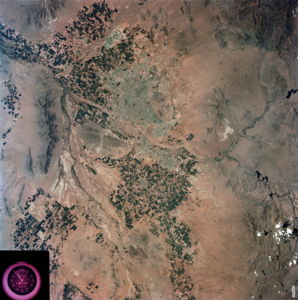The Power of Nature: Hurricanes vs. Tornadoes
When it comes to nature’s fury, few phenomena captivate us more than hurricanes and tornadoes. These swirling, destructive forces of nature can leave entire communities in ruins, yet they are distinct in their formation, characteristics, and impact. Let’s delve into the mesmerizing world of hurricanes and tornadoes to uncover what sets them apart.
Formation and Scale
Hurricanes and tornadoes originate from different atmospheric conditions, resulting in their contrasting characteristics. Hurricanes, also known as tropical cyclones, form over warm ocean waters near the equator. They are immense, spiraling storms that can span hundreds of miles in diameter. Tornadoes, on the other hand, are born from powerful thunderstorms, typically within a supercell. They are much smaller in scale, with a diameter ranging from a few dozen yards to a mile.
Structure and Appearance
One of the most noticeable differences between hurricanes and tornadoes lies in their structure and appearance. Hurricanes are well-organized systems with a clearly defined eye at the center. Surrounding the eye is the eyewall, consisting of intense thunderstorms and the strongest winds. Tornadoes, on the other hand, are characterized by their funnel-shaped clouds that extend from the base of a thunderstorm towards the ground. The funnel cloud is often accompanied by a visible debris cloud caused by the high winds.
Duration and Track
Another key distinction between hurricanes and tornadoes is their duration and track. Hurricanes are long-lasting storms that can persist for days or even weeks as they traverse across vast oceanic regions and land masses. They follow a relatively predictable path determined by atmospheric conditions and prevailing winds. Tornadoes, on the contrary, are short-lived and typically last for only a few minutes. They move rapidly along a narrow path, known as the tornado track, which can span a few miles.
Wind Speed and Destructive Power
While both hurricanes and tornadoes are associated with strong winds, their wind speeds and destructive power differ significantly. Hurricanes are known for their sustained winds that can exceed 74 miles per hour, with some reaching astonishing speeds of over 150 miles per hour. These powerful winds, combined with the storm surge and heavy rainfall, can cause widespread devastation. Tornadoes, on the other hand, are characterized by their violent rotating winds that can exceed 300 miles per hour. Despite their smaller size, tornadoes can unleash immense destruction in their narrow path.
Post
Post
Conclusion
As we explore the awe-inspiring world of hurricanes and tornadoes, we discover the unique qualities that make each phenomenon remarkable. While hurricanes showcase their immense size and endurance, tornadoes captivate us with their intensity and destructive power. Understanding the differences between these two forces of nature not only deepens our appreciation for the complexity of our planet but also helps us prepare for and mitigate the risks they pose.



